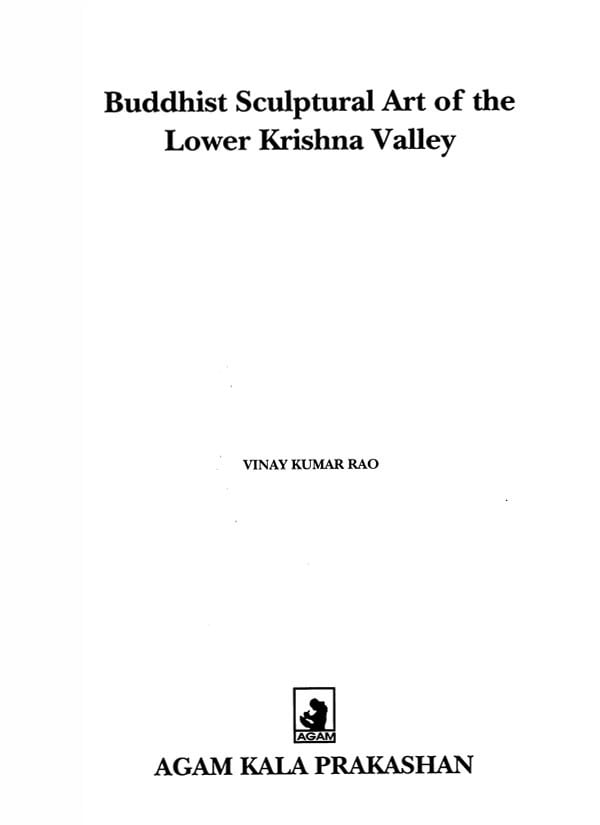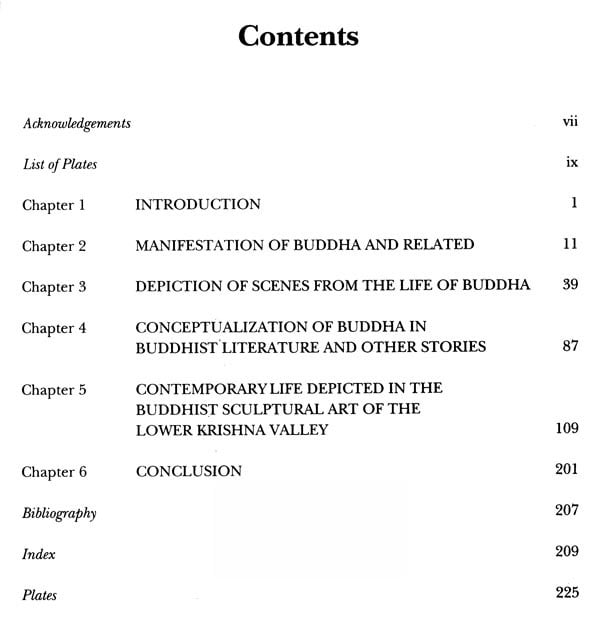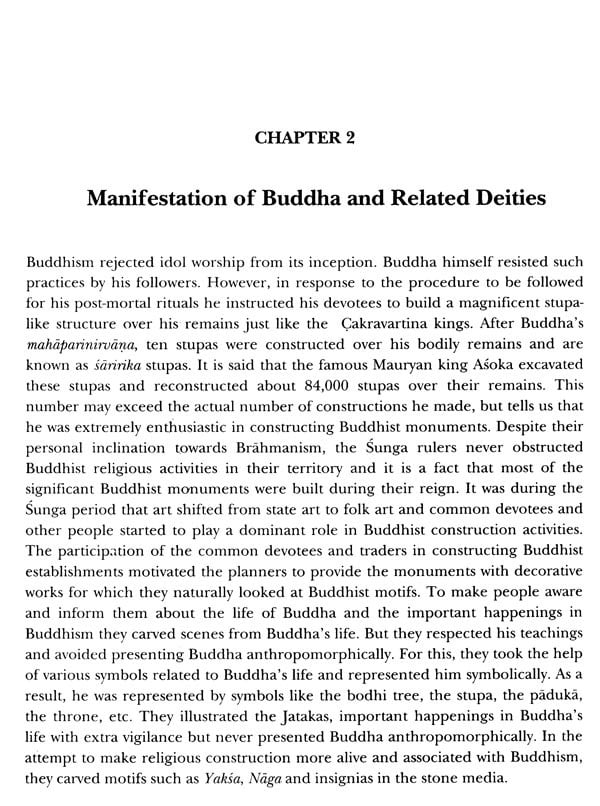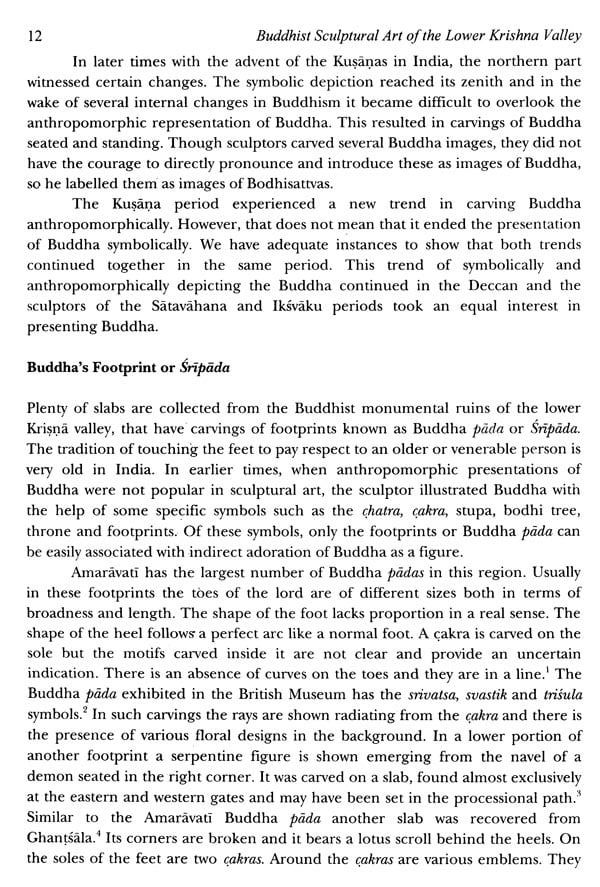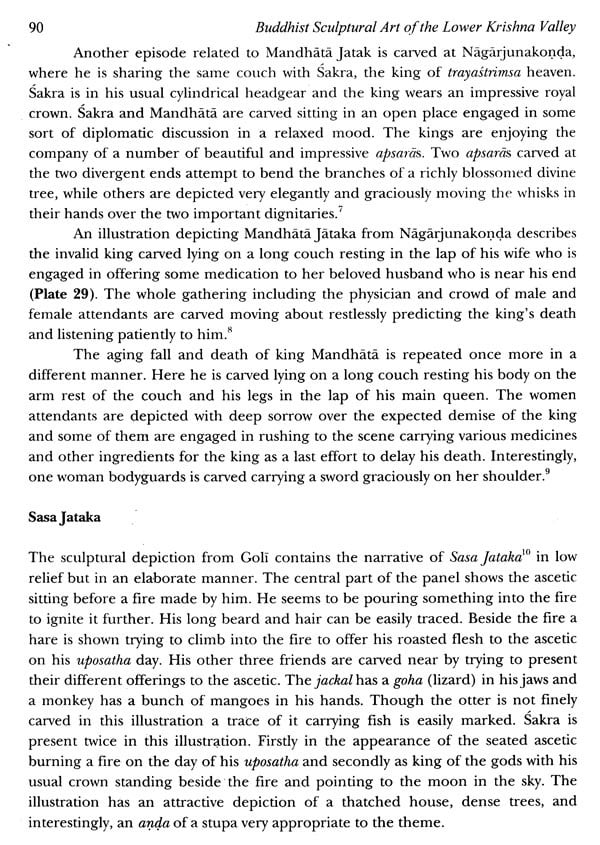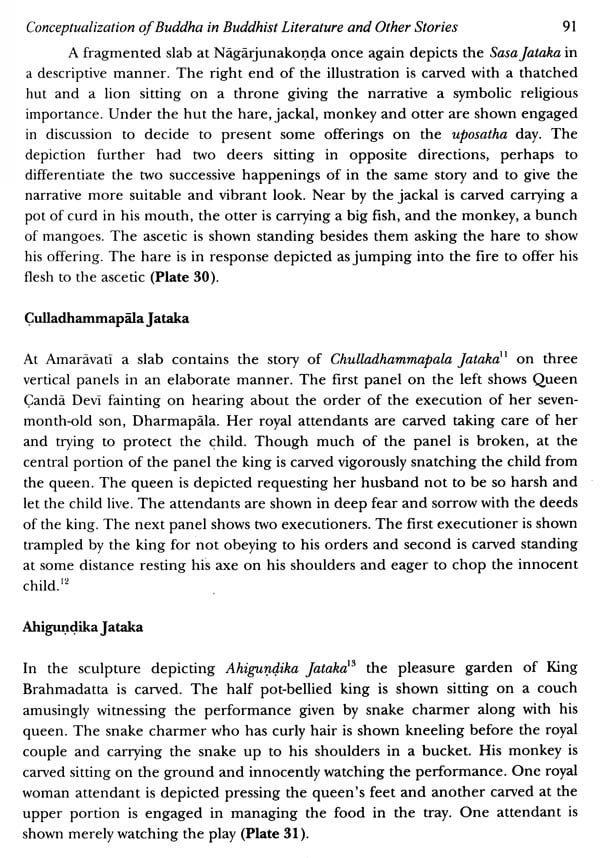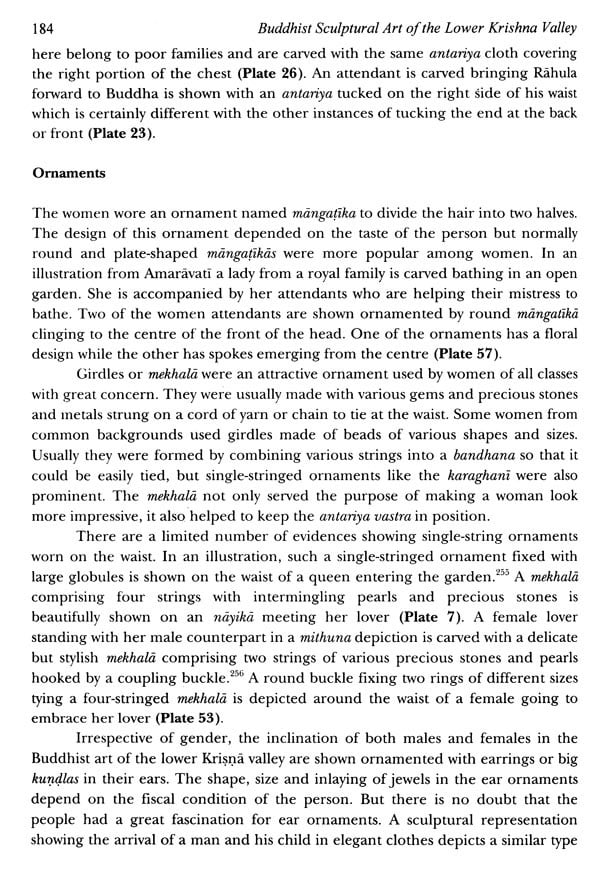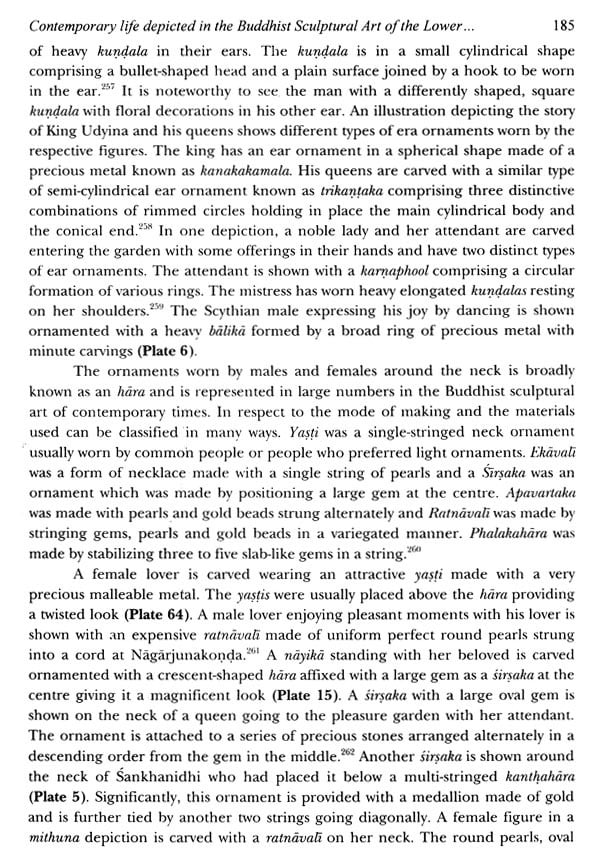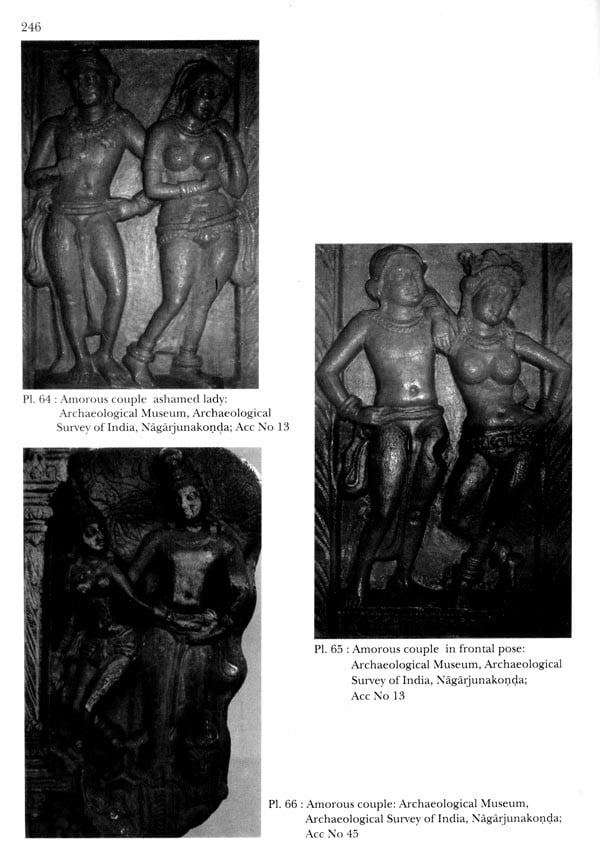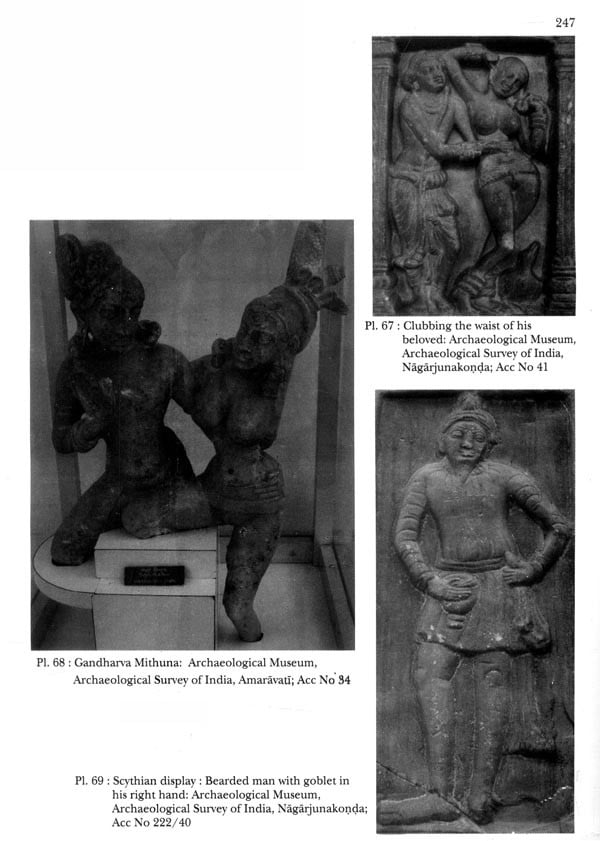About the Book Krishna is one of the most prominent river of peninsular India. It forms a large and fertile land. The convenient navigational approach to sea through Krishna helped in flourishing number of urban settlements like Amaravat Nagarjunakonda. Goll. Jaggayepetta, Chezarta. Ghantasala. Gummadidurru. Bhattiprolu The river also encouraged the rulers and traders of this rogion to Influence the polity, economy and culture through maritime relations in far East Asian region.
The polifical and economic stability attained during six centuries from 300 BC to 300 AD helped the Inhabitants in motivating to offer sizable amount of donations in order to establish Buddhist embellishments, The region was occupied by both Mahasanghikas and Mahisasaka sect of Buddhism for long time which encouraged large monastic and laity activities in this region. Hence consequently an impressive number of Stupas and Viharas were established in this region. The stupas of lower Krishna region provides a good number of representations related to Buddhism in accordance to primary objective of Buddhist sculptural art but also projects an extensive glimpse of contemporary life of inhabitants.
This work Buddhist Sculptural Art of the Lower Krishna Valley intends to present most important Buddhist narratives of lower Krishna region at one place. The work intends to make a comparative study of Buddhist narratives and their repetitive presentations at various Buddhist sites. The symbolic and anthropomorphic presentations of Buddha, manifestation of Buddha and related Deities, important scenes from life of Buddha, Jataka stories are main themes which are given due importance in the volume. The work also attempts to reconstruct the contemporary life of people living in this region during first three centuries of AD.
About the Author Vinay Kumar Rao received his school education from Kendriya Vidyalaya. He has Graduated and Post Graduated from Allahabad University. He has also been endowed with Master of Education from Kurukshetra University. His thesis titled Women in Early Buddhist Art was awarded for Ph.D. in year 2003-04 from VBS Purvanchal University, Jaunpur and also published from Swati Publications Delhi. He has presented various papers in International conferences on topics related to Buddhist Sculptural art in India and abroad. He has good number of publications in field of Archaeology especially in Buddhist Art of India and Myanmar.
Vinay Kumar Rao is currently an Assistant Professor since 2004 in the Department of History, Assam University.
About the Author The inflow of water through well-defined channels is called drainage and the arrangement of rivers and tributaries is defined as a natural drainage pattern The Knina is an east flowing older peninsular river. It is the second largest river of the peninsular drainage system and has a course of 1400 kms. It rises from the Sahyadri range of the Western Ghats near the old town of Mahabaleswar in Maharastra. It turns eastwards some distance after its emergence and then moves slowly in a south-eastward direction and passes through Sangli to the border of Karnataka state. Further on, it turns eastwards and flows in an irregular course across Karnataka and enters Andhra Pradesh. It is joined by many tributaries like Bhimarathi, Tungabhadra, Dindi, Müsi and Paler. Among these tributaries, the Bhima and the Tungabhadra are the largest and merge into it from the north and south respectively. Being a part of the peninsular drainage system it relies on the seasonal overflow of water during the rainy season. It forms a well-defined basin along its course and follows a straight and linear pattern; hence it has an absence of the meander-like formations of the northern rivers. It comprises a shallow valley within the plateau in peninsular India and forms a large and fertile delta before entering the Bay of Bengal through its two principal mouths. It provides peninsular India with a drainage area of around 245,000 square kilometres.
The Andhra region has a sea coast of about 400 miles and hence provides a lucrative source of trade. It is facilitated with sea ports situated at the mouths of large rivers, consequently offering navigational approaches for commercial activities from ancient times. Ptolemy mentions the names of Kontkossyla, Kodduru and Allosygne towns and specifies specially Apheterion in the Maisolia region which was located in the Krișnă delta region on the eastern coast.
Introduction The inflow of water through well-defined channels is called drainage and the arrangement of rivers and tributaries is defined as a natural drainage pattern The Knina is an east flowing older peninsular river. It is the second largest river of the peninsular drainage system and has a course of 1400 kms. It rises from the Sahyadri range of the Western Ghats near the old town of Mahabaleswar in Maharastra. It turns eastwards some distance after its emergence and then moves slowly in a south-eastward direction and passes through Sangli to the border of Karnataka state. Further on, it turns eastwards and flows in an irregular course across Karnataka and enters Andhra Pradesh. It is joined by many tributaries like Bhimarathi, Tungabhadra, Dindi, Müsi and Paler. Among these tributaries, the Bhima and the Tungabhadra are the largest and merge into it from the north and south respectively. Being a part of the peninsular drainage system it relies on the seasonal overflow of water during the rainy season. It forms a well-defined basin along its course and follows a straight and linear pattern; hence it has an absence of the meander-like formations of the northern rivers. It comprises a shallow valley within the plateau in peninsular India and forms a large and fertile delta before entering the Bay of Bengal through its two principal mouths. It provides peninsular India with a drainage area of around 245,000 square kilometres.
The Andhra region has a sea coast of about 400 miles and hence provides a lucrative source of trade. It is facilitated with sea ports situated at the mouths of large rivers, consequently offering navigational approaches for commercial activities from ancient times. Ptolemy mentions the names of Kontkossyla, Kodduru and Allosygne towns and specifies specially Apheterion in the Maisolia region which was located in the Krișnă delta region on the eastern coast.
**Contents and Sample Pages**
